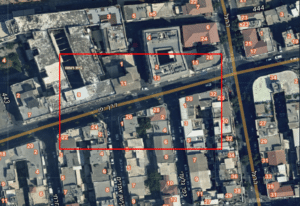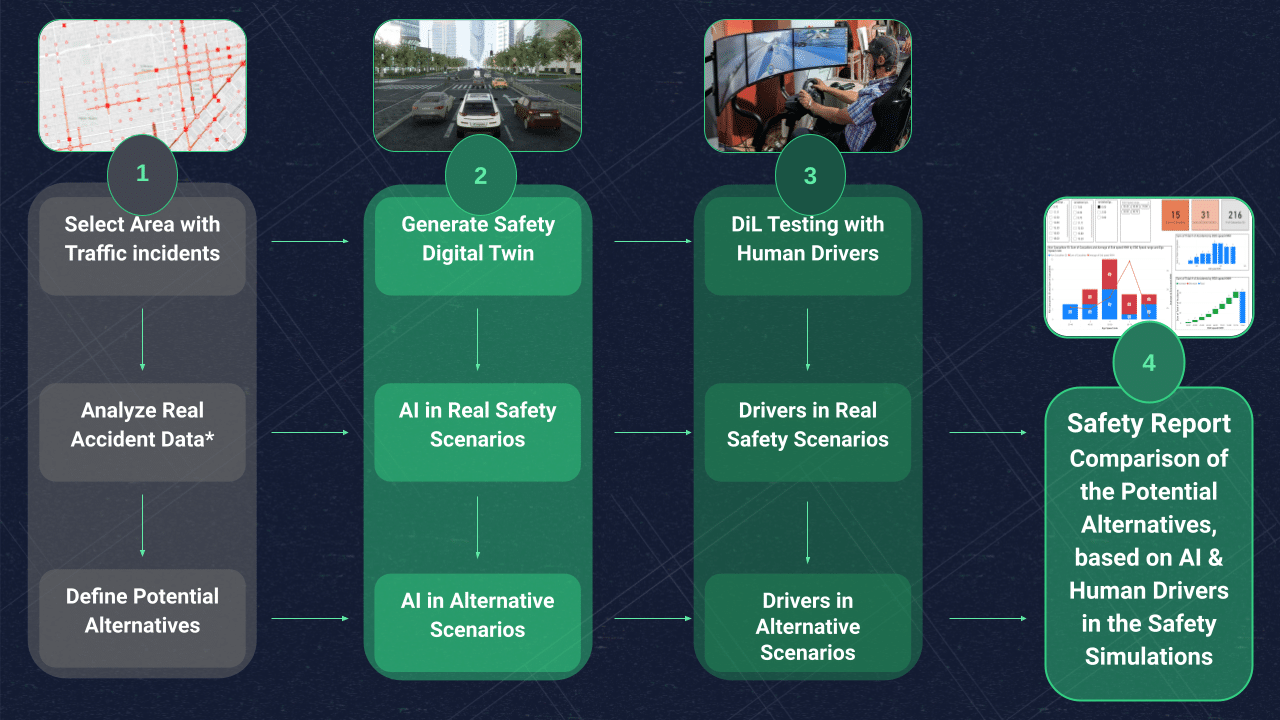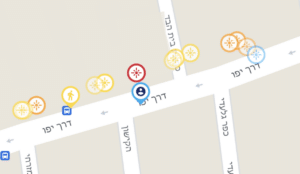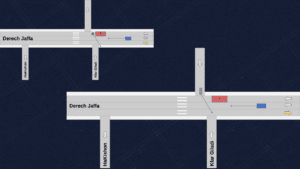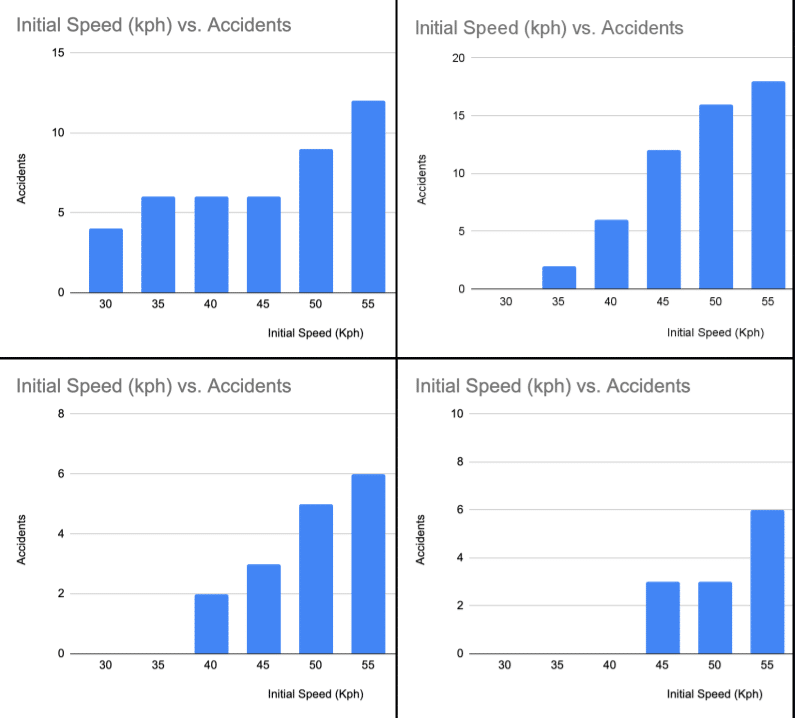RAPTOR TLV – Vision Zero Project: Enhancing Road Safety in the City of Tel Aviv
August 2023
Road safety is a paramount concern for cities worldwide, with the goal of achieving zero casualties in road accidents being a significant challenge. The RAPTOR TLV – Vision Zero Project was undertaken by the Tel Aviv Municipality in partnership with Cognata, with the aim of improving road safety and reaching zero casualties in the City of Tel Aviv. This Blog provides an overview of the project, highlighting the problem addressed, the solution developed, and the outcomes achieved.
The RAPTOR TLV – Vision Zero Project, funded by EIT Urban Mobility and co-funded by the European Union, focused on an accident-prone area in Tel Aviv known as Derech Jaffa. The project aimed to tackle road safety issues by leveraging a safety digital twin developed by Cognata. The digital twin was modeled and imported into Cognata’s platform, enabling analysis of safety scenarios and identification of critical safety factors. Through comprehensive data analysis and scenario simulations, the project provided valuable insights to the Tel Aviv Municipality, assisting in exploring the possibilities for the improvement of road safety measures in future projects. This article presents the key findings, recommendations, and lessons learned from the project.
Derech Jaffa aerial photograph
The City of Tel Aviv faces a significant road safety challenge, with an urgent need to improve safety measures and reduce casualties resulting from road accidents. Derech Jaffa, a specific area within Tel Aviv, has been plagued by various road safety issues. These issues include motorcycles utilizing the main lane to bypass traffic, trucks obstructing the right lane while unloading, narrow sidewalks with blocking objects, and poor visibility during nighttime. Addressing these safety concerns is crucial to achieving the municipality’s Vision Zero goals and ensuring the well-being of all road users. The RAPTOR TLV – Vision Zero Project aims to tackle these challenges head-on by implementing innovative solutions and leveraging advanced technologies to enhance road safety in the chosen urban area.
The RAPTOR TLV – Vision Zero Project involved a comprehensive solution developed by Cognata in collaboration with the Tel Aviv Municipality. The key steps in the solution development process were:
- Locating an Urban Area with Safety Issues: The municipality identified Derech Jaffa as a high-risk area with significant road safety challenges.
- Creating a Simulated Dynamic Digital Twin: Cognata generated a dynamic digital twin of the selected area, accurately replicating the road environment and traffic elements. This virtual replica served as the base tool for safety analysis and scenario simulations.
- Defining Safety Use Cases: Cognata and the municipality collaborated to define safety use cases or scenarios to be examined within the dynamic digital twin. These scenarios focused on critical factors such as lines of sight and speeds of different road users, including dangerous events involving motorcycles and trucks blocking sight.
- Scenario Analysis and Reporting: Cognata performed a comprehensive analysis of the safety use cases within the dynamic digital twin. By considering various variables and parameters, such as vehicle speeds and pedestrian behavior, the analysis assessed the probability of accidents and generated a detailed report. This report provided the municipality with insights and recommendations to improve road safety in the area.
Problem statement and generating solutions
Accidents in Derech Jaffa according to the ANYWAY website
The successful implementation of the RAPTOR TLV – Vision Zero Project relied on the utilization of specific city resources, including:
- Dynamic Digital Twin: Measurements of key streets such as HaKishon Street, Kfar Giladi Street, and Simtat Beit HaBad Street were incorporated into the dynamic digital twin. This ensured the accuracy of the simulated environment. Cognata’s digital twin technology has been evolving tremendously during the last couple of years, winning the 2022 and 2023 CES Innovation Awards.
- Traffic Behavior: The municipality provided relevant data on driving behavior within the chosen road section. Within Cognata’s platform, there are unique AI agents, which are mimicking drivers’ aggressiveness level and behavior. This data played a crucial role in defining the scenarios that were tested within the digital twin.
- Safety Use Cases: Well-defined use cases were established to test within the dynamic digital twin. These use cases encompassed various road users, lines of sight, and unique safety events.
The pilot phase of the Vision Zero Project focused on creating a safety analysis within a digital twin of a specific area in Derech Jaffa, as chosen by the Tel Aviv Municipality. The digital twin served as a virtual replica of the road environment and allowed for the examination of safety use cases. Cognata and the municipality collaborated to define these use cases, with a specific emphasis on lines of sight and speeds of different road users. The scenarios encompassed potential dangers, such as trucks blocking lanes and motorcycles bypassing traffic.
Following the creation of the digital twin and the definition of the use cases, extensive scenario analysis was performed. Cognata executed simulations based on different variables and parameters, assessing accident probabilities and generating insights. A comprehensive report was then compiled, providing the municipality with valuable information to enhance road safety in the area.
Multiple safety scenarios schematically described
The RAPTOR TLV – Vision Zero Project involved an in-depth experiment and analysis of multiple safety scenarios within the Mobility Digital Twin. These scenarios were specifically designed to address the safety hazards identified by the Tel Aviv Municipality, focusing on various road users such as trucks, motorcycles, cyclists, and pedestrians. The objective was to assess the risks associated with different scenarios and provide valuable insights for enhancing road safety in the pilot area.
Multiple safety scenarios were meticulously constructed and tested within the Mobility Digital Twin, simulating real-world road conditions and interactions. The scenarios encompassed different combinations of road users and locations, creating a diverse range of potentially hazardous situations. The aim was to identify the most dangerous scenarios, considering various variables such as vehicle speeds, locations, and interactions.
From the extensive range of safety scenarios tested, a total of seven scenarios were identified as the most dangerous. Each scenario involved different combinations of road users and locations, presenting critical safety challenges. The selected scenarios were as follows:
- Scenario AP_01a: Truck blocking the lane + Pedestrian
- Scenario AM_01: Truck blocking the lane + Motorcycle
- Scenario AC_01: Truck blocking the lane + Cyclist
- Scenario AM_02: Truck blocking the lane + Motorcycle
- Scenario B_01: Vehicle & Motorcycle bypass a bus + Truck
- Scenario D_01: Vehicle turns & Motorcycle bypass a bus
- Scenario AP_02: Truck blocking the lane + Pedestrian
Each scenario was subjected to multiple iterations with varying variables, such as different vehicle speeds, positions, and traffic conditions. The simulations were run tens to hundreds of times for each scenario, generating a wealth of data to analyze and extract valuable insights.
Safety use cases as simulated within the dynamic digital twin
The analysis of the safety scenarios yielded critical insights that shed light on the most hazardous situations in the pilot area. The main findings were:
- High-Risk Areas: The simulations revealed that the areas around HaKishon and Simtat Beit HaBad were particularly susceptible to dangerous situations during truck unloading activities. Identifying these high-risk locations allows the municipality to prioritize safety measures and allocate resources accordingly.
- Multi-Dangerous Zones: Certain scenarios, where standing trucks coexisted with motorcycles bypassing in the same area, demonstrated a significant risk of accidents exceeding 45%. Recognizing these multi-dangerous zones is crucial for implementing targeted interventions to mitigate potential collisions.
- Impact of Speed: Comparing different initial speeds, it was observed that a 50 KPH initial speed resulted in nearly 50% more accidents than a 40 KPH initial speed. Lowering the speed limit in critical areas is shown to be an effective measure for reducing the likelihood of accidents and their severity.
The RAPTOR TLV – Vision Zero Project has yielded valuable conclusions and lessons that contribute to the ongoing efforts to improve road safety. Based on the data analysis and comprehensive scenario simulations, several key recommendations have been identified:
- Reduce Multi-Dangerous Situations: Implement measures to separate areas for truck unloading and areas prone to motorcycles bypassing. This segregation will minimize the occurrence of multi-dangerous zones and enhance overall safety for all road users.
- Restrict Acceleration Speed of Electric Micro-Mobility: Enforce speed restrictions on electric micro-mobility vehicles to ensure safe interactions with other road users and mitigate potential risks associated with their accelerated movements.
- Lower Speed Limits: Consider reducing the speed limit from 50 KPH to 40 KPH in critical areas, especially around locations with high-risk scenarios. This reduction has shown significant potential in decreasing the number of accidents and enhancing road safety.
- Improve Line of Sight: Address line-of-sight issues, particularly around turns and areas with perception problems. Enhancing visibility through road design improvements or additional signage will contribute to safer road conditions and a more predictable traffic environment.
The project has also served as a valuable Proof of Concept for Cognata, demonstrating the effectiveness of their simulation platform as a tool for safety testing in urban environments. Despite the pilot’s time and resource limitations, it has provided important insights to further develop Cognata’s product for smart cities and road safety in urban mobility.
Moving forward, Cognata aims to expand on this opportunity and offer municipalities and urban mobility planners a comprehensive five-step project approach. This approach includes creating a digital twin of the chosen area, examining safety scenarios, collaborating with stakeholders to identify effective alternatives, evaluating the scenarios with different options, and providing a comprehensive report of road safety recommendations based on simulation outputs. By following this approach, Cognata seeks to contribute further to improving road safety and reducing accidents in cities.
The Vision Zero Project has demonstrated the effectiveness of leveraging a dynamic digital twin and advanced simulation techniques to enhance road safety in the City of Tel Aviv. By identifying high-risk scenarios and providing actionable insights, the project has provided valuable insights and recommendations to the Tel Aviv Municipality, enabling them to make informed decisions and prioritize road safety initiatives.
We would like to extend our heartfelt appreciation to the Tel Aviv Municipality for their partnership and collaboration throughout the RAPTOR TLV – Vision Zero Project. We also express our gratitude to EIT Urban Mobility for their funding and support, which made this project possible. This project showcases the power of collaboration between public and private entities to drive meaningful advancements in road safety. Through continued partnerships and knowledge sharing, we can collectively work towards creating safer and more sustainable urban environments for all road users. We are excited about the possibilities that lie ahead and remain committed to furthering road safety initiatives and developing innovative solutions for smart cities.
Read more:
Cognata wins the EIT Urban Mobility’s RAPTOR Challenge
